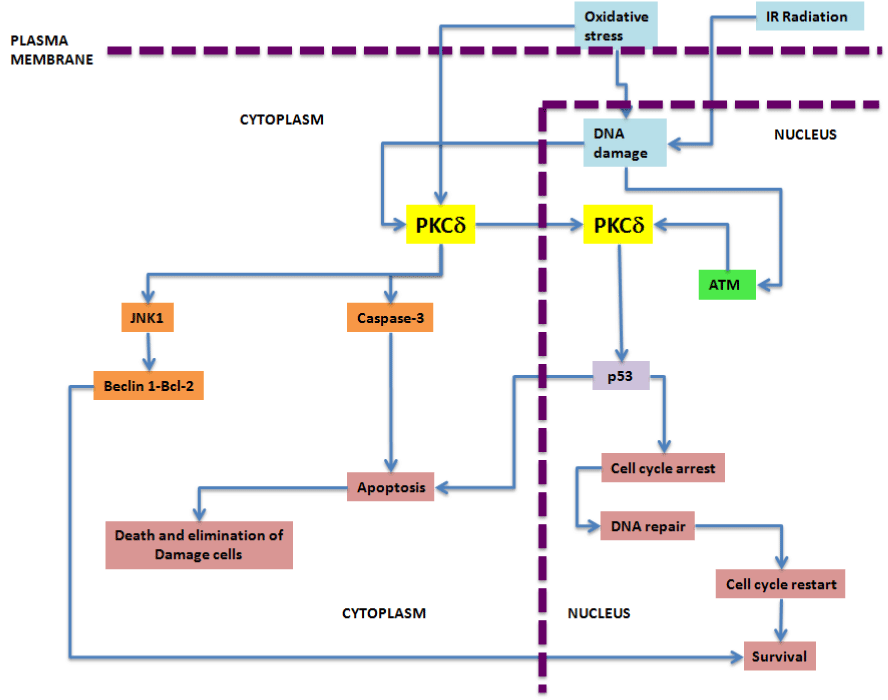
 |
| Figure 5: The oxidative stress caused by an abnormal accumulation of reactive oxygen species leads to PKCδ is relocated in the cell nucleus. Moreover, oxidative stress can damage DNA, and DNA damage activates ATM (a family of kinases whose sequence is homologous to PI3K), ATM activates PKCδ in the nucleus. PKCδ leads to apoptosis through the execution of the following: activation of the caspase pathway, activation of MAPK (through JNK1 activation) or activation of p53. Furthermore, p53 can lead to the survival of a tissue damaged by oxidative stress, to stop the cell cycle and allow repair of damage [1-5]. |